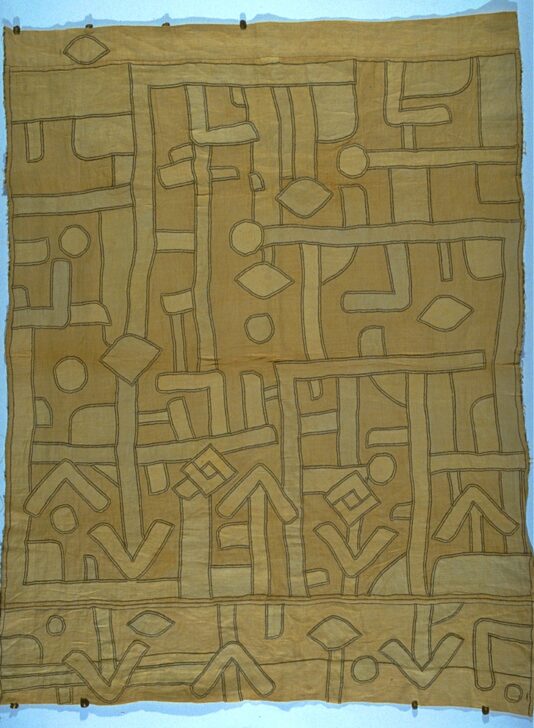Raffia Textile Panel
Kuba

Description
Subject Matter:
The Kuba peoples are renowned for their elaborate, geometrical surface designs, such as applied to this cloth. Kuba cloth is often made from barkcloth: a felt fabric, typically not associated with being a textile because it is not woven. This particular cloth consists of the applique technique of adding patches of fabric to hide holes produced by pounding the panel to soften it. The finished textile may be placed in a mortar with cold water and beaten with a smooth, ivory pestle.
In the 19th century, decorated raffia cloth was used as a marker of prestige, as currency, to pay tribute, settle legal disputes, and in public displays such as the funerals of high-ranking titleholders. Additionally, they were often used as initiation objects during ceremonial rites of passage. Though barkcloth is the typical fabric, more recently industrial cloth has been used as a replacement.
References:
Monni Adams, Kuba Embroidered Cloth, African Arts, 1978
Daniel Biebuyck, The Arts of Zaire, 1985
Georges Meurant, African Textiles from the Kingdom of Kuba, 1986
Roy Sieber, African Textiles and Decorative Arts, 1972
Physical Description:
Tan rectangular panel consisting of various tan rectilinear shapes that are outlined with thin double black stitching appliqued onto the panel.
Usage Rights:
If you are interested in using an image for a publication, please visit https://umma.umich.edu/request-image/ for more information and to fill out the online Image Rights and Reproductions Request Form.